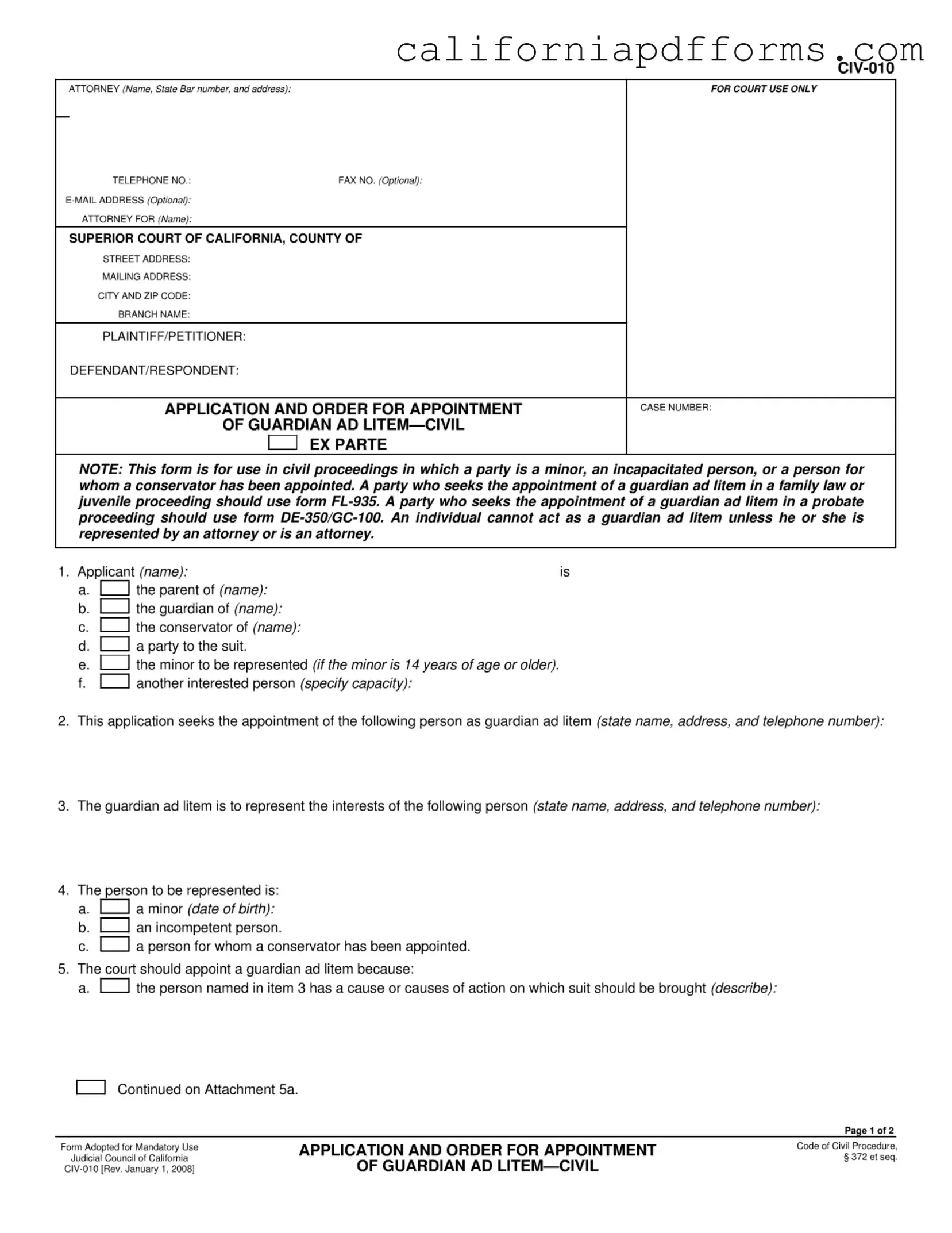The California Guardian ad Litem form is designed for civil proceedings where a party is a minor, incapacitated person, or someone under a conservatorship. This form facilitates the appointment of a guardian ad litem, who will represent the interests of the individual involved in the legal process. It ensures that vulnerable parties have appropriate legal representation to protect their rights and interests.
Who can apply to be a guardian ad litem?
Individuals eligible to apply for the role of guardian ad litem include parents, guardians, conservators, or any interested parties in the case. If the individual to be represented is 14 years old or older, they may also apply on their own behalf. However, it is essential that the applicant is either an attorney or is represented by one, as individuals cannot act as a guardian ad litem without legal representation.
The form requires several key pieces of information, including:
-
The applicant's name and their relationship to the person being represented.
-
The name and contact details of the proposed guardian ad litem.
-
The name and details of the person whose interests will be represented.
-
The reason for seeking the appointment of a guardian ad litem.
Completing these sections accurately is crucial for the court's consideration of the application.
How does one demonstrate the need for a guardian ad litem?
To justify the appointment, the applicant must provide specific reasons in the application. Common justifications include:
-
The individual has a cause of action that needs to be pursued.
-
More than ten days have passed since the summons was served without any application for a guardian ad litem.
-
The individual does not have a guardian or conservator.
-
Any other reasons that highlight the necessity of representation.
Providing clear and compelling reasons can significantly influence the court's decision.
What qualifications must a proposed guardian ad litem possess?
The proposed guardian ad litem must be competent and capable of understanding the rights of the person they will represent. They should have no conflicting interests that could compromise their ability to advocate effectively. If there are any concerns regarding their qualifications or potential conflicts, these must be addressed in the application.
What happens after the application is submitted?
Once the application is submitted, the court will review it. If the court finds the appointment reasonable and necessary, it will issue an order appointing the guardian ad litem. This order will specify the name of the appointed guardian and the person they will represent. The applicant will receive a copy of this order, which is essential for the guardian to begin their role.
Can the guardian ad litem be removed or changed?
Yes, a guardian ad litem can be removed or replaced if circumstances change or if the court determines that it is in the best interest of the person being represented. This may occur due to issues related to competency, conflicts of interest, or other valid concerns. A formal request must be made to the court to initiate this process.
